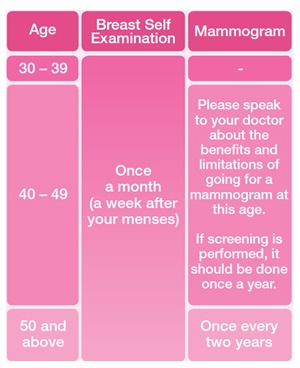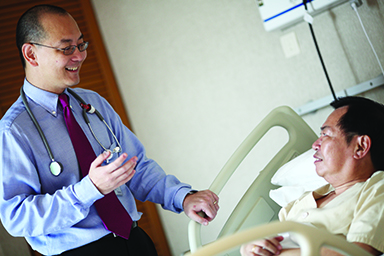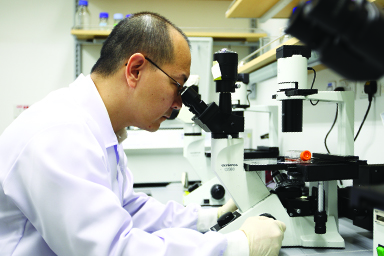NUHS Institutions will NEVER ask you to transfer money or disclose bank details over a call.
If in doubt, call the 24/7 ScamShield helpline at 1799, or visit the ScamShield website at www.scamshield.gov.sg.
Make an appointment or seek a second opinion here.
The female breast is made up mainly of:

Breast cancer is a group of cancer cells or malignant tumour that has developed from the cells in the breast. These cancer cells have grown into the surrounding tissues or spread to distant parts of the body. It usually starts in the cells of the lobules (the milk-producing glands) or the ducts (the passages that drain milk from the lobules to the nipple).
In other cases, this type of cancer can begin in the stromal tissues, which are the fibrous and fatty connective tissues of the breast.
* People who think they may be at risk should discuss this with their doctor.
In the early stages of breast cancer, there is usually no pain or symptoms at all. Breast cancer may cause any of the following signs and symptoms:
* The chart below states the recommended guidelines for breast screening.

Source: Health Promotion Board
Like other cancer types, regular screening can detect breast cancer early — when it is likely to be curable. In addition, breast cancer, as doctors often say, is sometimes found right after the symptoms appear, but many of those with early cancer have no symptoms. This is why getting the following recommended screening tests is important:
Surgery
Surgery is the most common form of treatment for the disease. During the procedure, a surgeon removes the tumour and other affected areas. Surgical options may include the following:
Chemotherapy
This uses a combination of drugs to either destroy the cancer cells or slow down their ability to grow and divide. Chemotherapy is often prescribed by a medical oncologist.
Radiation Therapy
Radiation therapy is the use of high-energy X-rays or other particles to kill cancer cells. The most common type of radiation therapy is the external beam radiation therapy, wherein radiation is emitted from a machine outside the body.
Hormone Therapy
If you choose hormone therapy, the doctor may prescribe hormone therapy drugs. These drugs destroy cancer cells by limiting their hormone supply.
Targeted Therapy
This uses targeted drugs that block the growth of breast cancer cells in specific ways. These drugs work differently from the standard chemotherapy drugs.

Breast Cancer Care Approach

Breast Cancer Care Team

Breast Cancer Online Resource Library

Patient Support Groups

Supportive Care Programmes

Clinical Trials

Warna 94.2FM Radio Show with Dr Tang Siau-Wei

Breast Cancer Research